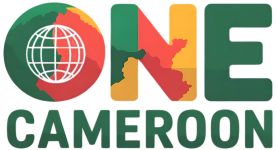Agriculture underpins Cameroon’s economy and sustains the livelihoods of over 60% of its population. The country’s climatic zones—from humid rainforests in the south to arid savannahs in the north—support diverse crops. Historically, cash crops such as cocoa, coffee, and bananas dominated exports. In recent decades, government initiatives and international partnerships have sought to modernize farming practices, improve yields, and enhance food security.
In the Littoral and Southwest regions, cocoa farming remains a household staple. Smallholder farmers cultivate cacao trees intercropped with banana and plantain palms, creating agroforestry systems that preserve soil fertility and biodiversity. The Coffee and Cocoa Research Institute (CRCI) in Mbankomo runs demonstration plots showcasing high-yield, disease-resistant cacao varieties. Training programs teach farmers grafting techniques and integrated pest management—reducing reliance on harmful pesticides. Such innovations have boosted average yields from 0.3 tonnes/ha to over 0.8 tonnes/ha in pilot communities.
Rice production is a strategic priority for Cameroon’s National Agricultural Investment Plan (PNIA). In the Far North, irrigation schemes along the Logone and Chari rivers have yielded multiple harvests annually. Cooperative unions facilitate collective marketing—ensuring fair prices and stable incomes. In the Western Highlands, terrace-based rice paddies capture rainwater runoff, allowing farmers to cultivate rice even on steep slopes. Extension officers train villagers in improved paddy management: land leveling, proper seed selection, and organic fertilizer use. As domestic rice output increases, Cameroon aims to reduce imports currently valued at over $200 million annually.
Vegetable and horticultural production flourishes near urban centers. Around Yaoundé and Douala, peri-urban farmers grow tomatoes, onions, peppers, and leafy greens in greenhouse projects supported by NGOs like Heifer International. These demonstration farms provide seedlings, drip-irrigation systems, and training in greenhouse management—yielding off-season harvests that fetch premium prices at city markets. Urban farmers also experiment with vertical gardening and hydroponics to optimize limited space. Such innovations reduce post-harvest losses and increase incomes for women-led cooperatives.
Livestock development focuses on poultry, cattle, and small ruminants. In the North and Adamawa regions, traditional cattle-rearing Toupouri and Fulani herders practice transhumance—moving herds seasonally to access pasture. Government veterinary services conduct vaccination campaigns against foot-and-mouth disease, brucellosis, and peste des petits ruminants. Feedlot projects in Ngaoundéré—led by private investors—use maize byproducts to fatten cattle for local slaughterhouses, improving meat quality and marketability. Poultry cooperatives in West and Northwest regions supply hybrid broiler chicks and train members in biosecurity, reducing mortality rates and ensuring consistent egg production.
Agro-processing is crucial for value addition. In Bafoussam, women’s cooperatives operate cassava processing units—turning tubers into gari (granulated cassava) and tapioca. These products, packaged attractively, target urban consumers seeking convenient, shelf-stable staples. Similarly, in Limbe, palm oil mills integrate modern presses to extract oil more efficiently, while byproducts like palm kernel cake feed livestock. Herbs and spices—like grains of paradise and alligator pepper—are harvested in forest zones and exported to European markets catering to gourmet cuisine.
Cameroon’s youth are increasingly drawn to agribusiness. Startup incubators such as Workstation (Yaoundé) and ActivSpaces (Douala) sponsor agritech innovations: mobile apps that connect fish farmers with buyers, remote-sensing platforms monitoring crop health via satellite imagery, and drone services for precision spraying. Microfinance institutions extend lines of credit for smallholder farmers purchasing improved seeds or building poultry sheds.
Government policies under PNIA and the Cameroon Vision 2035 prioritize doubling agricultural GDP by 2035 while ensuring environmental sustainability. Initiatives include reforestation of degraded lands, promoting climate-smart agriculture, and incentivizing renewable energy for irrigation pumps. As Cameroon navigates global challenges—climate change, fluctuating commodity prices, and population growth—agriculture remains both backbone and frontier for development.









